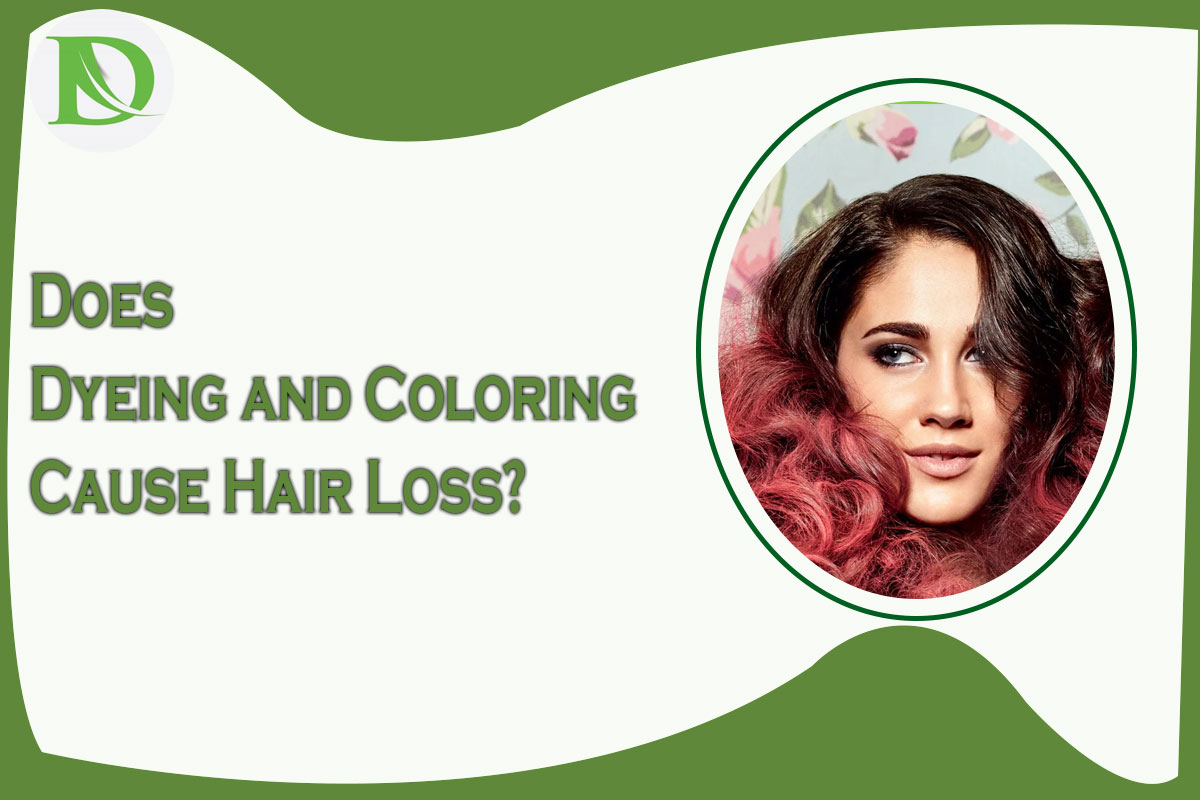Table of Contents
Dyeing and Coloring cause hair loss
The pursuit of vibrant, stylish hair has led many individuals to explore the world of hair dyeing and coloring. However, a pervasive myth suggests that indulging in these aesthetic practices may contribute to hair loss. In this comprehensive guide, we will delve into the science behind hair dyeing, dispel common misconceptions, and explore whether there is any truth to the notion that dyeing and coloring causes hair loss.
Understanding the Basics of Hair Structure
Before we dive into the myth, it’s essential to understand the basic structure of hair. Each hair strand consists of a shaft, cuticle, cortex, and medulla. The cuticle, an outer protective layer, covers the cortex, which contains the pigment responsible for hair color. Understanding this structure is crucial for unraveling the relationship between hair dyeing and potential hair loss.
The Hair Dyeing Process
- Chemical Ingredients: Hair dyes contain a combination of chemicals, including hydrogen peroxide and ammonia, which help in opening the hair cuticle to allow the dye to penetrate the cortex.
- Pigment Alteration: The dyeing process involves altering the natural pigment in the cortex, either by lightening or darkening it, to achieve the desired color.
- Temporary vs. Permanent Dyes: Temporary dyes coat the hair shaft and do not penetrate the cortex, while permanent dyes make lasting changes to the hair color by entering the cortex.
Addressing the Myth: Does Dyeing Cause Hair Loss?
1. Hair Shaft vs. Hair Follicle Damage:
- Hair dye primarily affects the hair shaft, not the hair follicles. The cuticle of the hair may sustain some damage during the dyeing process, leading to temporary dryness or brittleness. However, this does not result in hair loss, as the follicles remain unaffected.
2. Allergic Reactions:
- Allergic reactions to certain dye ingredients can occur, leading to itching, redness, or swelling of the scalp. In severe cases, this may cause hair breakage, but it is not synonymous with hair loss from the follicles.
3. Proper Application and Timing:
- Adhering to the recommended application guidelines and timing is crucial. Leaving the dye on for too long or using it too frequently can lead to over-processing, causing damage to the hair shaft. However, this doesn’t translate to permanent hair loss.
4. Temporary Shedding:
- Some individuals may experience temporary shedding after dyeing their hair. This is often a result of the hair’s natural growth cycle, and the shedding is unrelated to the dyeing process. Hair typically regrows once the cycle completes.
5. Selecting Quality Products:
- Using high-quality, professional-grade hair dyes can minimize the risk of damage. These products are formulated to be gentler on the hair while still achieving vibrant, long-lasting color.
Tips for Safe Hair Dyeing Practices
- Patch Test:
- Always conduct a patch test before applying any hair dye to check for potential allergic reactions.
- Follow Instructions:
- Adhere to the recommended application instructions and timing provided by the dye manufacturer to avoid over-processing.
- Limit Frequency:
- Avoid excessive dyeing and allow sufficient time between sessions to prevent over-processing and minimize potential damage.
- Deep Conditioning:
- Incorporate deep conditioning treatments into your hair care routine to nourish and hydrate the hair shaft.
- Professional Application:
- If unsure, seek the expertise of a professional hairstylist for a safe and well-executed dyeing process.
Conclusion
In conclusion, the myth that dyeing and coloring causes hair loss is largely unfounded. While the process may temporarily affect the hair shaft, the hair follicles, responsible for hair growth, remain intact. By adopting safe and informed hair dyeing practices, individuals can enjoy the benefits of vibrant, stylish hair without compromising their overall hair health. As with any cosmetic procedure, it’s essential to prioritize the quality of products and follow recommended guidelines for optimal results. Remember, a well-informed approach to hair care ensures that your tresses can be both colorful and healthy.
Taking right vitamins are essential for healthy hair growth and may help in preventing hair shedding and thinning,A balanced and varied diet, along with proper hair care practices, is crucial for maintaining healthy hair. If you have concerns about your hair health, it’s advisable to consult with a healthcare professional or a registered dietitian
Frequently Asked Questions (FAQs)
- Does hair dyeing cause permanent hair loss?
- No, hair dyeing does not cause permanent hair loss. The dye primarily affects the hair shaft, and any damage incurred is usually temporary. The hair follicles, responsible for hair growth, remain unaffected.
- Can allergic reactions to hair dye lead to hair loss?
- Allergic reactions to hair dye may cause itching, redness, or swelling of the scalp. In severe cases, this can lead to hair breakage, but it is not synonymous with permanent hair loss from the follicles.
- Is shedding after hair dyeing a cause for concern?
- Temporary shedding after hair dyeing is not uncommon and is often a result of the hair’s natural growth cycle. Hair typically regrows once the cycle completes, and this shedding is not indicative of permanent hair loss.
- What precautions should be taken before hair dyeing?
- Conduct a patch test before applying any hair dye to check for potential allergic reactions. Adhere to recommended application instructions and timing to avoid over-processing. Limit the frequency of dyeing sessions and incorporate deep conditioning treatments into your hair care routine.
- Can over-processing from hair dyeing lead to hair loss?
- Over-processing from frequent or prolonged dyeing can damage the hair shaft, leading to dryness or brittleness. However, this damage is not permanent, and the hair follicles remain capable of regrowth.
- Are professional-grade hair dyes safer than at-home products?
- Professional-grade hair dyes are formulated to be gentler on the hair while achieving vibrant, long-lasting color. Using high-quality products can minimize the risk of damage during the dyeing process.
- How long should I wait between hair dyeing sessions?
- To prevent over-processing and minimize potential damage, it’s advisable to wait a sufficient amount of time between hair dyeing sessions. The specific timeframe may vary based on individual hair health and the type of dye used.



